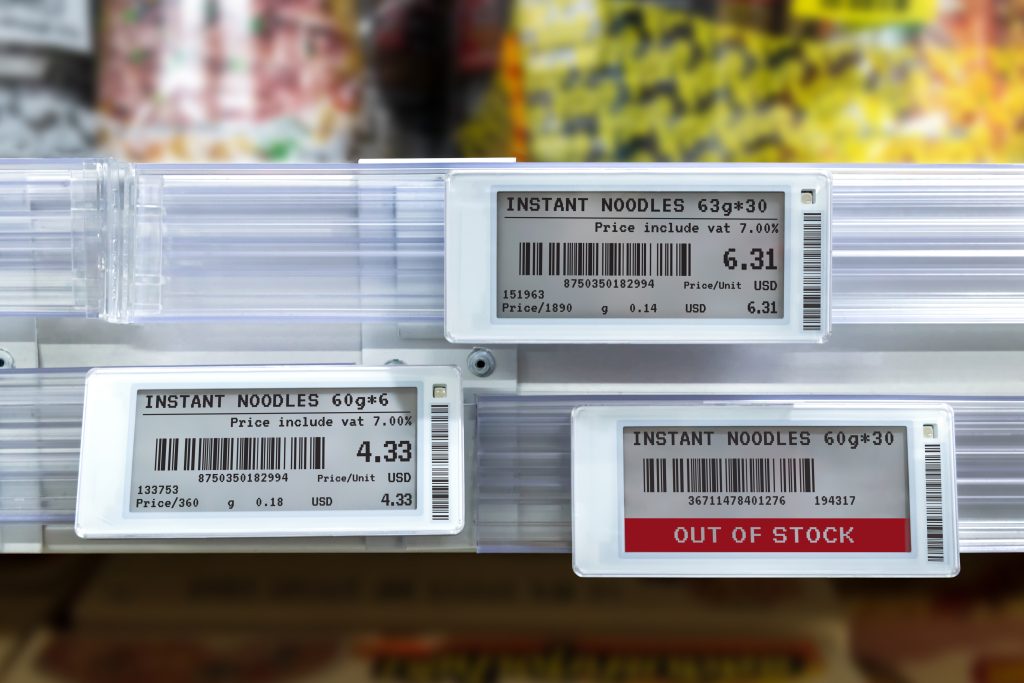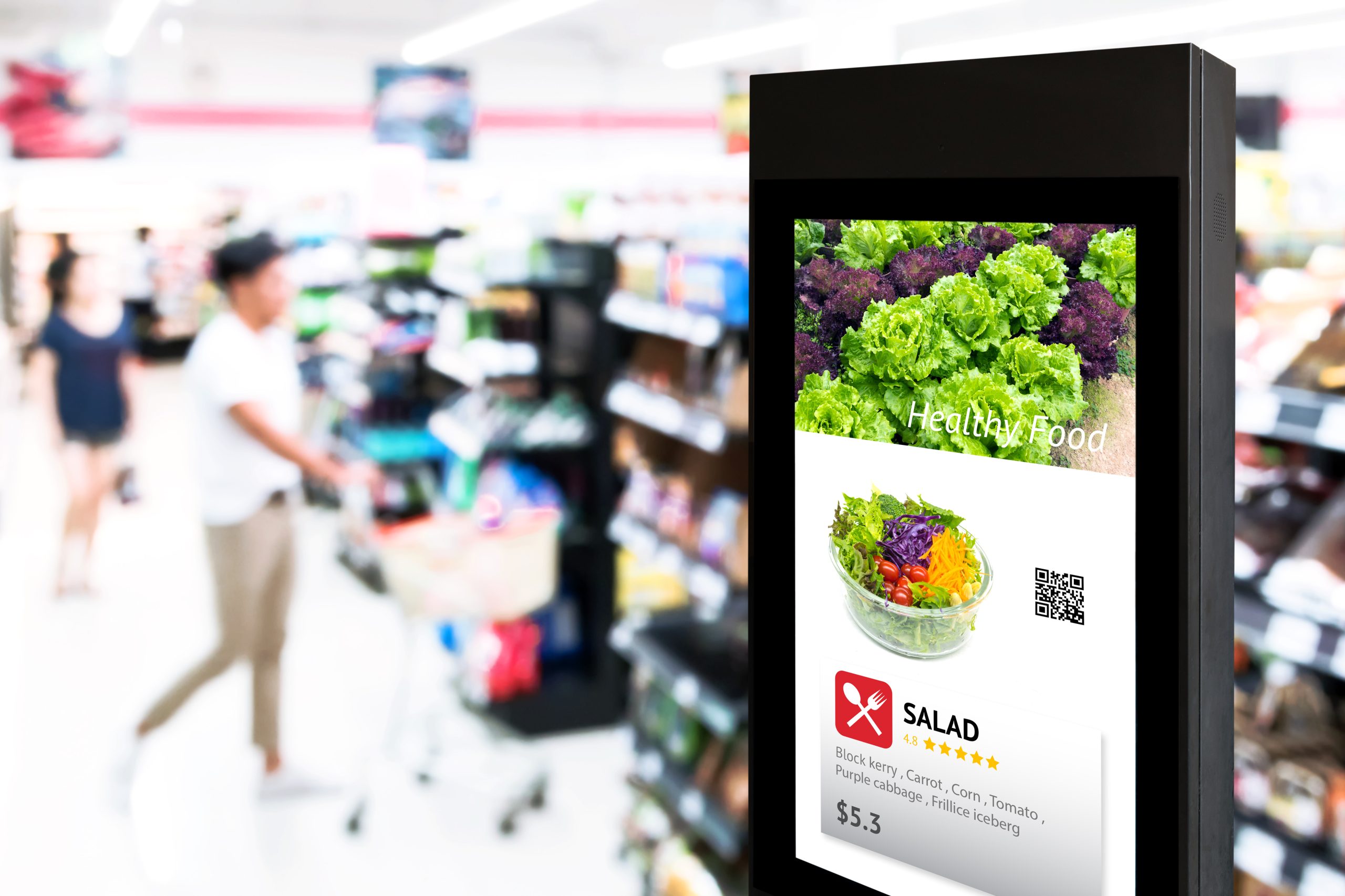How much do Electronic Shelf Labels (ESL) Cost?
Electronic Shelf Labels (ESLs) are becoming increasingly popular among retailers in Australia, with major retailers such as Woolworths, Aldi, and Dan Murphy’s rolling out this technology. The demand for electronic price tags has never been higher, as retailers are looking for ways to overcome challenges such as staffing issues and volatility in pricing levels from suppliers. However, one of the most common questions business owners have about this technology is the cost.
The answer to this question is that it depends on the retailer’s requirements. It’s important to note that this is not a cheap solution and should be seen as a capital investment that will serve the business in the long term. The battery life on top-of-the-line labels is 10+ years, so this is a solution designed to improve operations both in the short and long term. Installing a cheaper solution will cause more harm than good in the long term. If the project seems too expensive, it’s best to stick with the current paper solution rather than invest in an unproven electronic solution with inherent risks.
It’s important to note that electronic pricing is not a solution where you simply buy the hardware and then the seller wishes you the best of luck and never speaks with you again. It requires aligning the correct type of hardware to meet specific needs, as well as “software as a service” which needs to be carefully integrated with current systems (POS, ERP, etc.) to create an outcome that will benefit the company in the long term.
In this blog post, we will explore the main elements of an ESL project that influence the cost. Starting in this first part of the series, with the most important element – the Electronic Shelf Labels themselves. Part 2 will look at other hardware & software requirements for a successful ESL project.
- HOW MANY LABELS ARE REQUIRED? The bulk of the investment is the cost per Electronic Shelf Label. Each label is an advanced piece of technology, with an e-ink screen, various receptors and transmitters, LED lights, NFC technology, and a high-end battery inside. Considering this, the price per label is very reasonable, but it’s not free. It’s important to work out how many ESLs you will need. Please keep in mind that often the number of labels in the POS/ERP system is far higher than the amount of labels required on the shop floor. In some cases, we’ve seen the number of SKUs in the system has been more than double the actual requirement for implementation. Another point to note is that in some circumstances, the entire shop does not require electronic tags. Some categories may hardly ever change price or go on promotion, so in order to save money, you could leave these sections with paper price tickets and implement electronic tickets for the rest of your products, at least as a phase one.

Smart retail digital store technology concept.Electronic Shelf Label(ESL) led for automatically updated displaying product pricing on shelves for retail business. Price is change from control service. - SIZE OF THE OPPORTUNITY? HEAD OFFICE INVOLVEMENT. Like with most things, the more labels you acquire, the cheaper the price per label. If you are purchasing more than 5,000 labels, you should be in a position to begin to negotiate a lower cost per label. Keep in mind however, that the average supermarket has 20,000 labels, so in this industry, a large order is considered to be 100,000+ labels.If you are a smaller company which is part of a franchise, we recommend involving head office as this can help bring the price down for your store, as it is now part of a larger opportunity for the supplier.
- INFRASTRUCTURE REQUIREMENTS In addition to the cost of the electronic labels themselves, there are also infrastructure requirements that need to be considered. This includes the cost of installing and maintaining the necessary hardware, such as servers and gateways, as well as the cost of any additional software and integration services.For example, if a retailer already has a robust IT infrastructure in place, the cost of implementing electronic labels may be lower than for a retailer that needs to invest in new hardware and software. Additionally, retailers should also consider the cost of ongoing maintenance and support for their infrastructure.
- SOFTWARE INTEGRATION. Another important factor that can influence the cost of electronic labels is the need for software integration. This includes integrating the electronic labels with existing systems such as point-of-sale (POS), enterprise resource planning (ERP), and inventory management systems.The cost of software integration can vary depending on the complexity of the integration and the number of systems that need to be integrated. Retailers should also consider the cost of ongoing support and maintenance for the software integration.
- QR CODES AND NFC TECHNOLOGY. Another important factor that can influence the cost of electronic labels is the use of QR codes and NFC technology. QR codes and NFC are used to provide additional functionality such as product information, reviews, and special offers to customers.Using QR codes and NFC technology can add additional cost to the electronic labels, but it can also provide a more engaging and interactive shopping experience for customers. Some retailers also use QR codes and NFC to enable customers to make purchases directly from the electronic labels, further enhancing the customer experience.When considering QR codes and NFC technology, retailers should also consider the cost of creating and maintaining the necessary digital content such as product information and special offers.

If you are after less than 100 labels for your store, then electronic shelf labels might not be the right fit for your business. This is because the setup costs will be similar to a project involving over 1,000 labels, making the cost per label disproportionately high compared to a larger project.
In conclusion, the cost of electronic labels can vary widely depending on the retailer’s requirements. It is important to view it as a long-term capital investment and to consider all the elements that influence the cost, such as the number of labels required, the size of the opportunity, head office involvement, the infrastructure requirements, software integration and if the retailer wants to add QR codes and NFC technology. If you are a smaller store or franchise, involving head office can help bring the cost down. However, if a store requires less than 100 labels, electronic shelf labels may not be the right fit due to the high cost per label compared to a larger project.
It is important to work with a reputable supplier that can provide a comprehensive solution that includes not only the hardware but also the necessary software and integration services and QR codes and NFC technology as per the retailer’s requirement. With the right solution in place, retailers can realize significant benefits from electronic labels such as improved efficiency, reduced labor costs, and increased flexibility in pricing and customer engagement.
In the next part of this series, we will explore other hardware and software requirements for a successful ESL project, such as the infrastructure needed and software integration. Stay tuned for more insights on the cost and implementation of electronic shelf labels.
